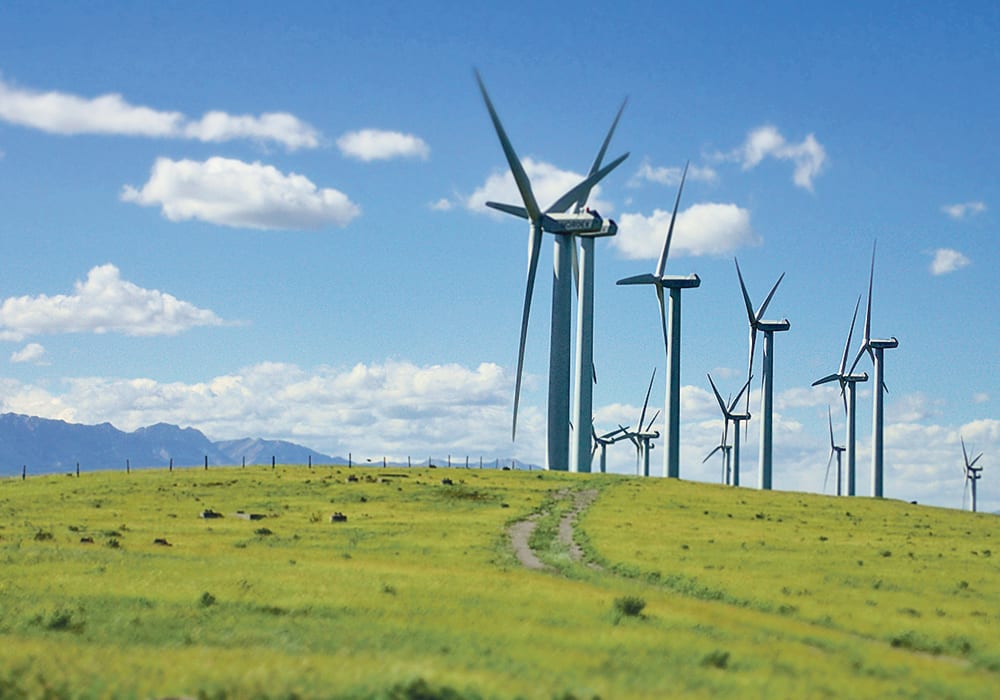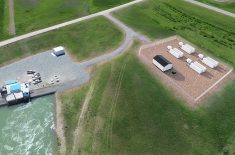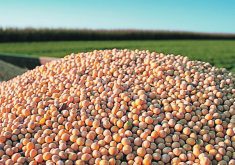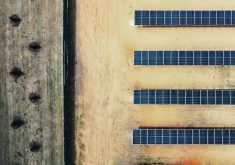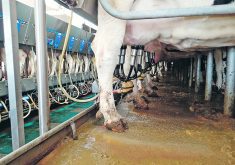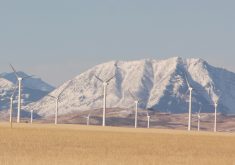The Canadian Wind Energy Association welcomes the new rules, saying they will help build community trust
Landowners won’t be on the hook for reclamation costs on wind and solar projects in Alberta now that the government has developed new rules.
Reclamation of such projects hasn’t been an issue because most are relatively new or still within their useful lives, but until last month there were no provisions in place to force companies to clean up and reclaim sites no longer in use.
Alberta’s new rules dictate that property must be returned to its original capacity and also places other requirements on companies to fully assess sites before disturbance, conduct interim monitoring and obtain final reclamation certification.
Read Also

Feds propose overhaul of chronic wasting disease control program
Chronic Wasting disease control program getting updated by Canadian Food Inspection Agency with feedback encouraged from producers.
Daryl Bennett of the Action Surface Rights Association said the new rules, dubbed the Conservation and Reclamation Directive for Renewable Energy Operations, is an improvement for landowners.
“It’s better than it was. I’d hoped that they’d do a little bit more, but it’s fairly good,” he said.
“(The government) improved quite a bit, making these companies notify what they are doing and what they’ve done and cleaning it up afterwards.”
The directive was effective Sept. 14 on private land and will come into full effect on all land in January 2020.
“With the growth of renewable energy operations on private land, landowners and environmental organizations have expressed increasing concerns with respect to the reclamation of these projects in the long term,” the directive reads in its preface.
“Like other specified land activities in the province, the land used for renewable energy operations (REOs such as wind, solar and geothermal) after reclamation is expected to support various land uses similar to those that existed prior to the REO.”
Companies have to specify what land they intend to use and survey all roads, pits, substations and other project elements. Reclamation certificates would then dictate that all property affected must be reclaimed.
The directive outlines reclamation expectations for various types of land, including cultivated land, tame pasture, native grassland, upland forest and peat land.
Bennett participated in sessions held this summer that collected feedback on draft regulations, so he was familiar with most of its content before the directive’s release last month.
The new rules are timely, given the government’s emphasis on increasing renewable energy production in Alberta. It has set a goal of adding up to 5,000 megawatts of renewable energy by 2030, and many renewable energy companies have responded to the call.
Evan Wilson, regional director with the Canadian Wind Energy Association (CANWEA), said the new rules provide direction and predictability for companies that are planning projects, and as such they are good news.
“Overall the predictability that this adds is something that CANWEA is supportive of and hopefully it helps in conversations with communities because it will help communities feel more comfortable that there are standards in place, that there is a standard they can point to when dealing with our members,” he said.
Wilson said questions about reclamation do arise when companies are negotiating with landowners.
To date the only wind project to be decommissioned in Alberta is at Cowley Ridge, west of Pincher Creek. However, Wilson said the pattern in Europe and the United States on wind farms is to “repower wind assets” by putting up new turbines when the old ones come down. That’s only possible if companies already have good relationships with owners of the land where the turbines stand.
The Alberta directive doesn’t address all the issues landowners face with renewable projects, however.
Bennett said the government did not develop the equivalent of an orphan well fund, which is available in the oil and gas sector. Money in that fund can be used for reclamation of old or abandoned oil and gas facilities, though most agree it is underfunded for the current need.
Landowners cannot apply to the Surface Rights Board if renewable energy companies fail to pay their agreed rental fees, and they might have to pony up any unpaid property taxes left by companies that go bankrupt or otherwise disappear.
“Counties can, and some have indicated they will, come after the landowner for those unpaid property taxes,” Bennett said.
The other concern revolves around the still pending Redwater decision. Outcome of that case could affect whether landowners must bear the costs of liability if companies go under with no remaining assets.
“So this doesn’t solve all the problems out there. Landowners should still be very careful signing up, and (with) who they’re signing it with.”
Bennett added that he thinks the Alberta Utilities Commission will look more closely at proposals now that the government has provided specifics on what projects must include.
As for project developers, Wilson said the new rules will make projects more expensive but they did not come as a surprise.
“Our members were preparing for this kind of reclamation at the end of life (of projects) and this gives them a standard to compare to so that they know what they’re doing is enough,” he said.
“And also it adds an element of preparation through the life of the project so that developers and operators can understand how best to prepare for the eventual end of life as well.”


